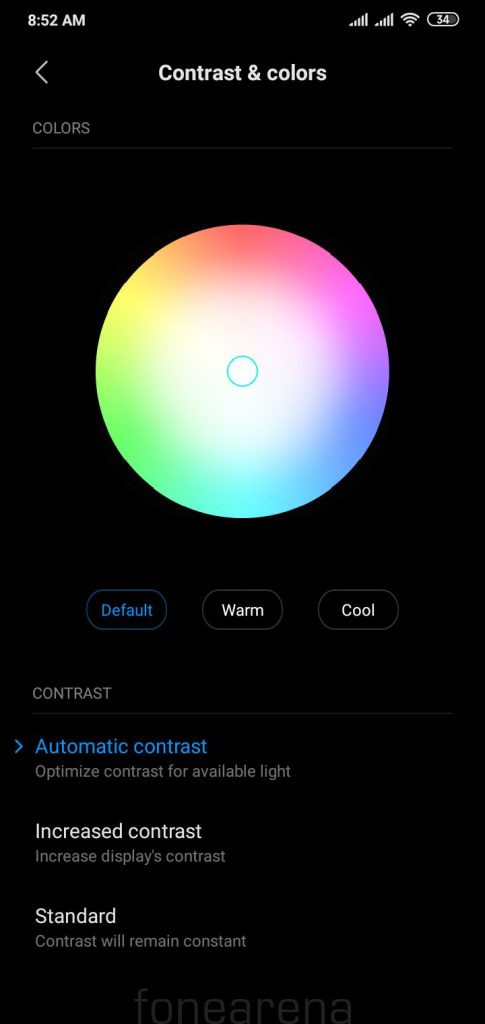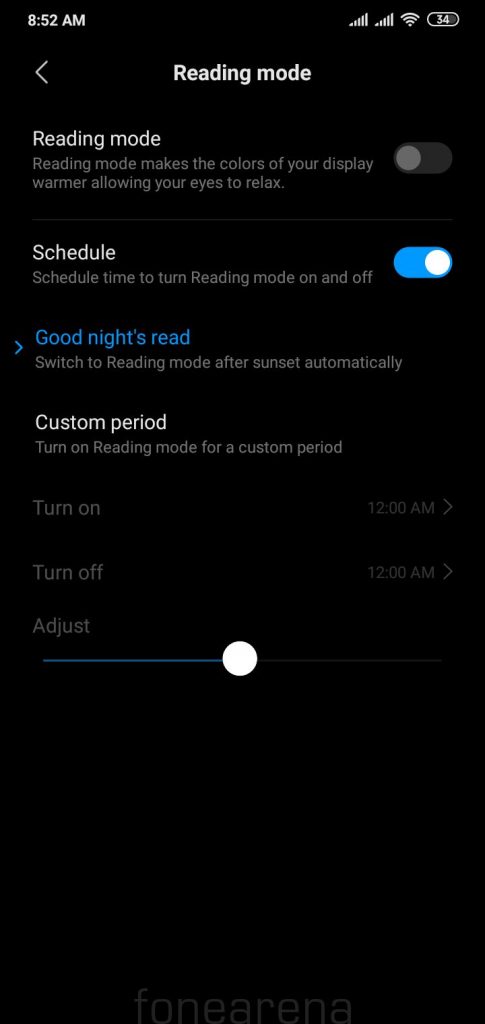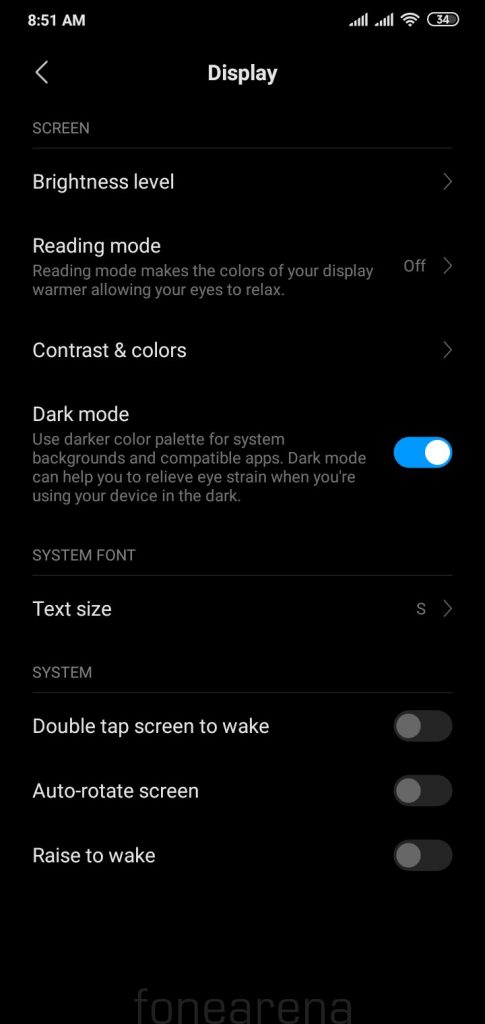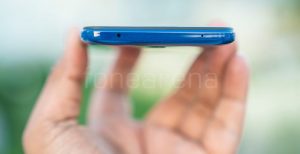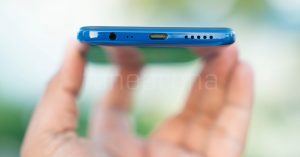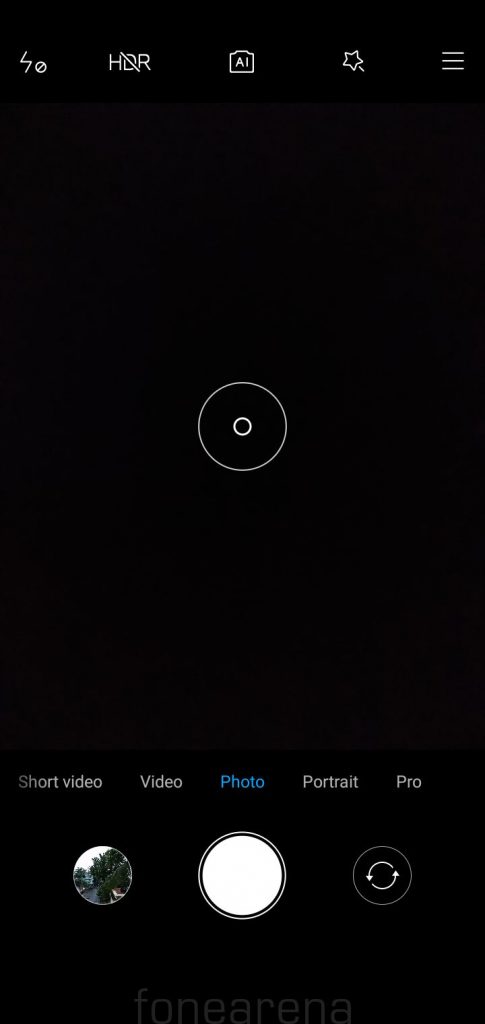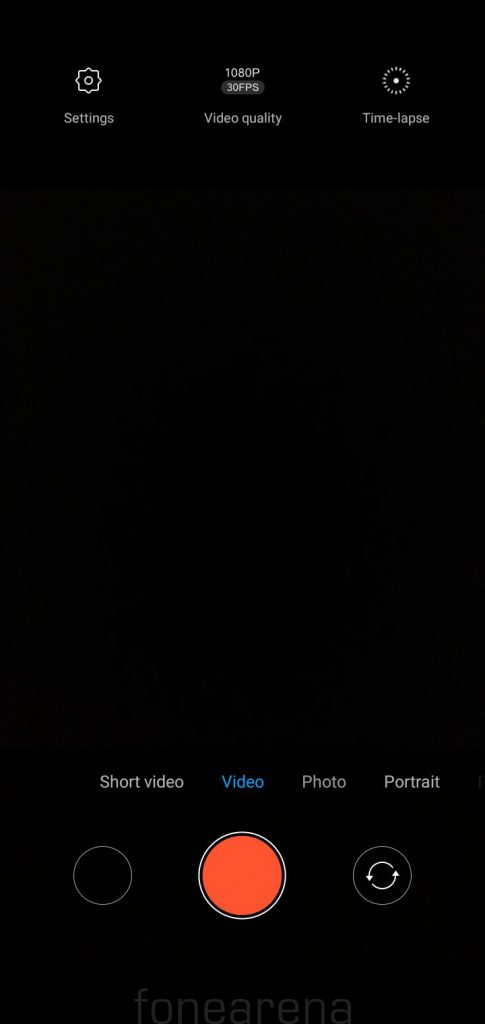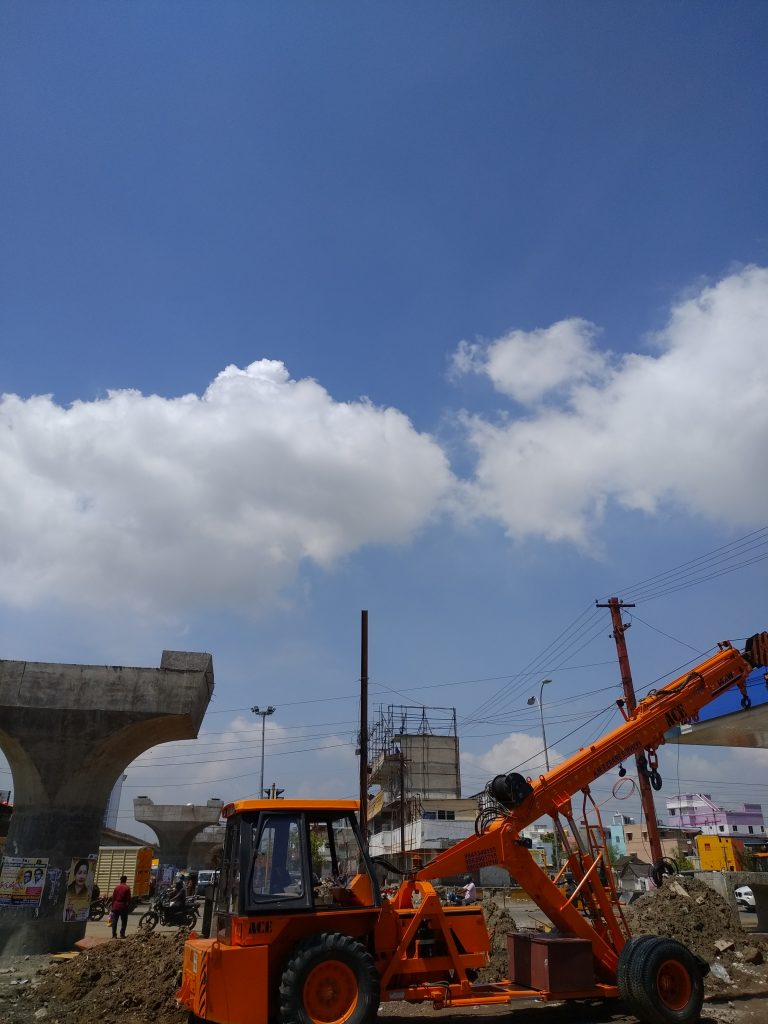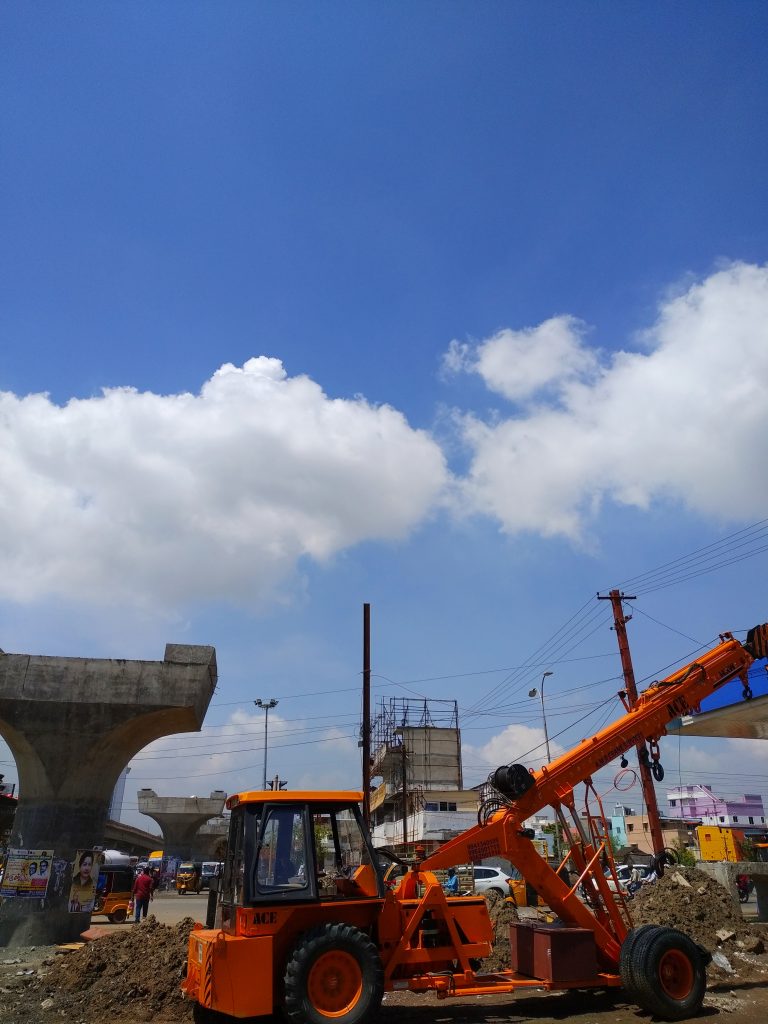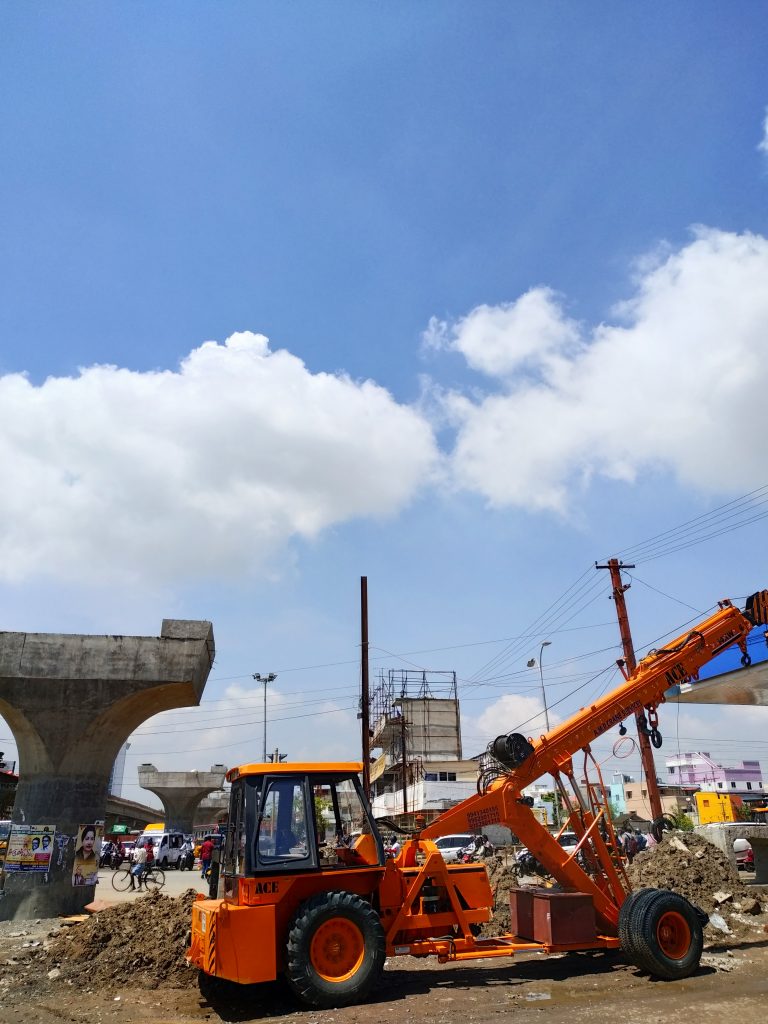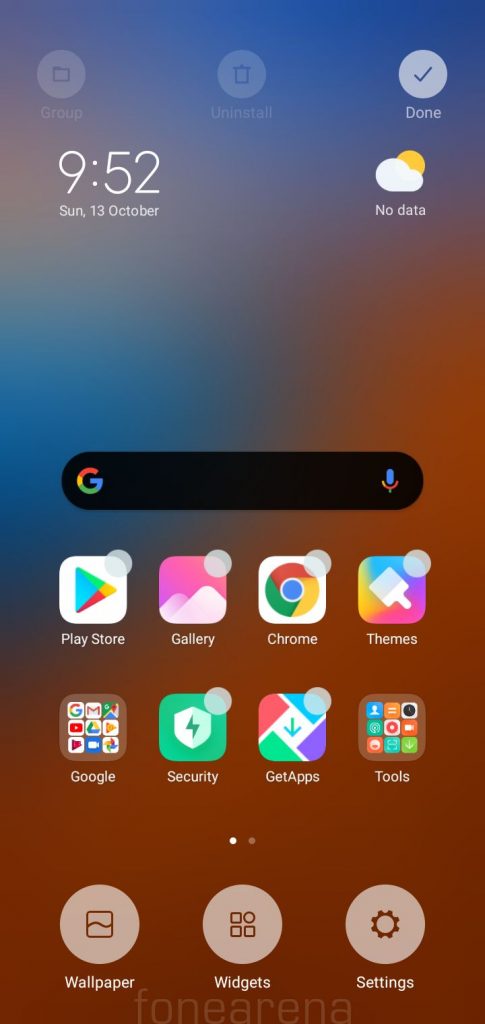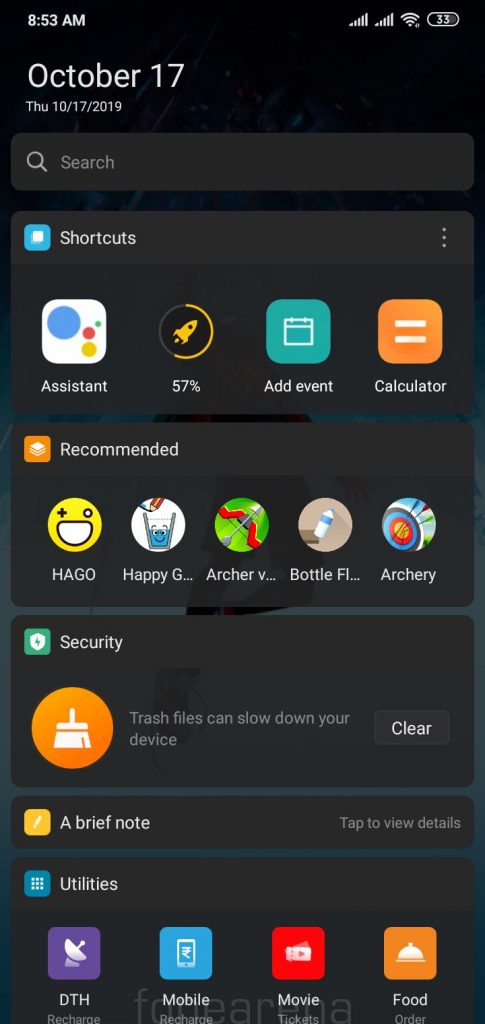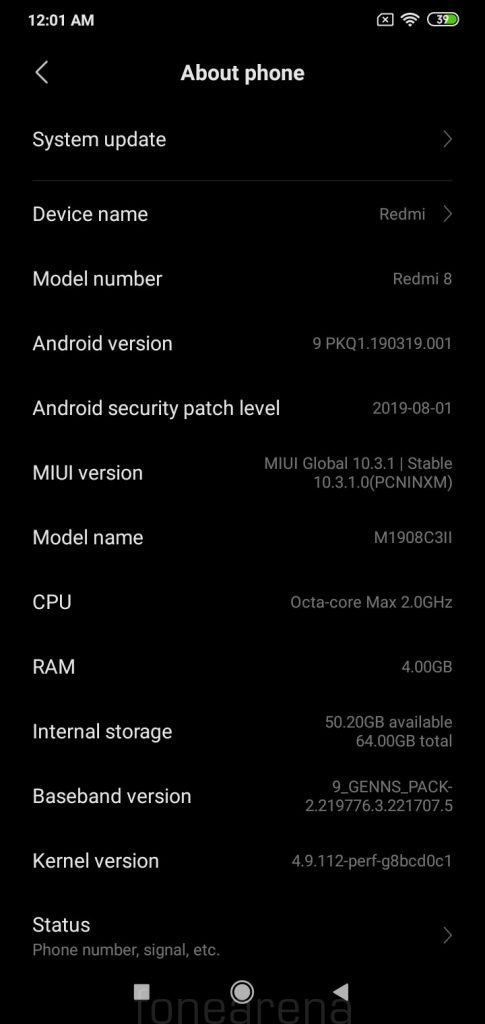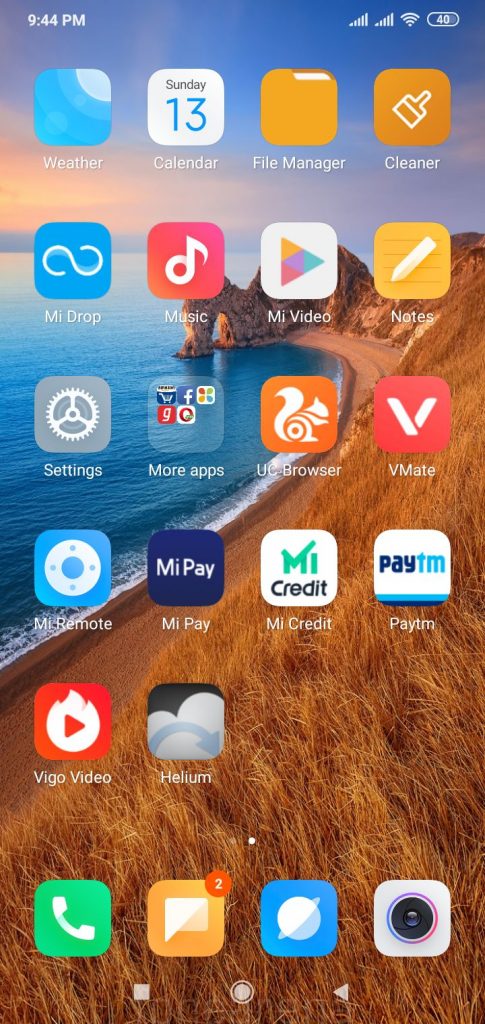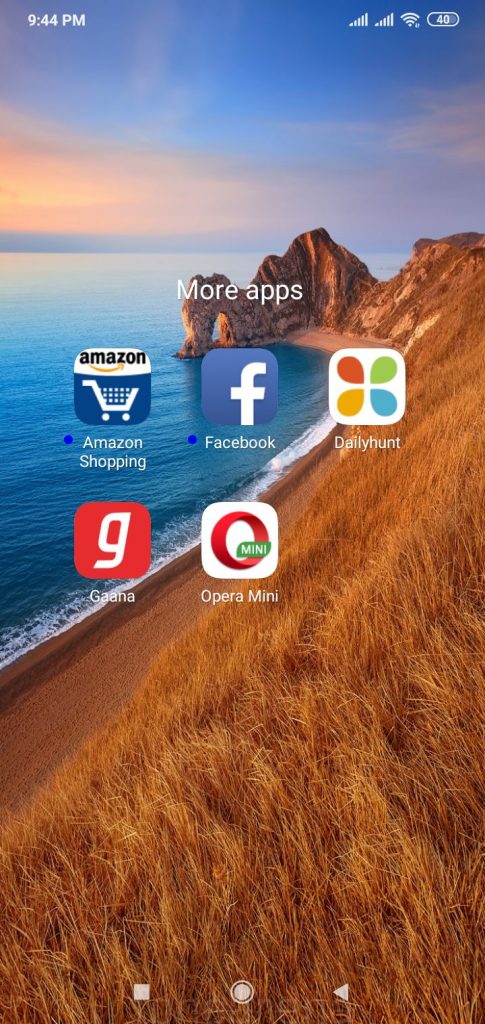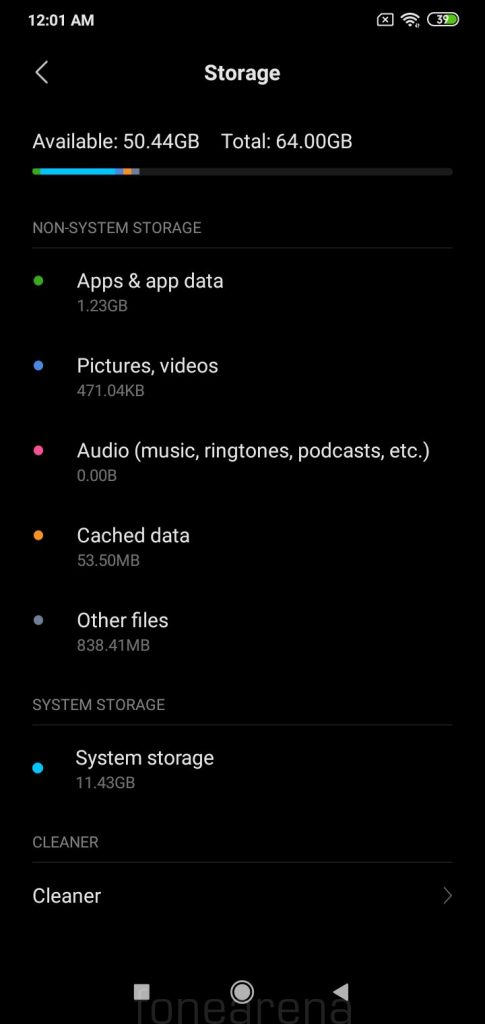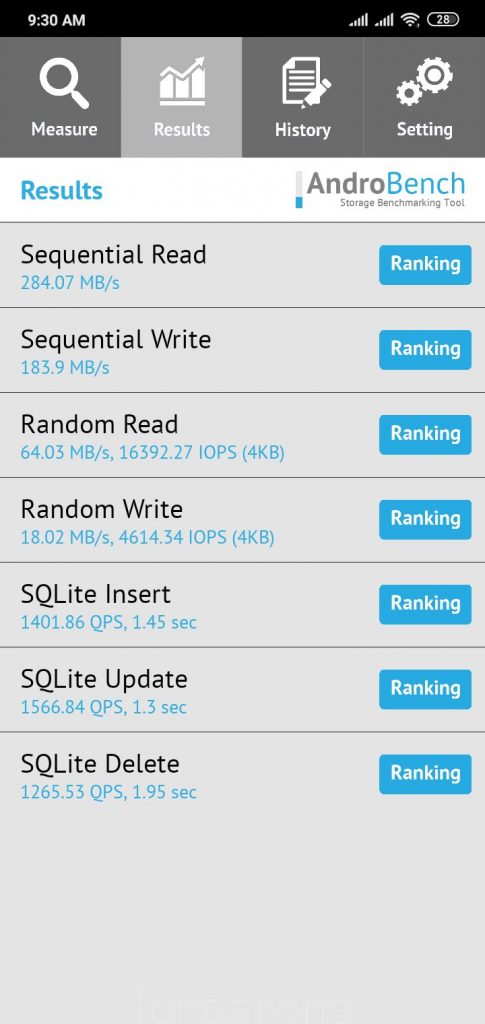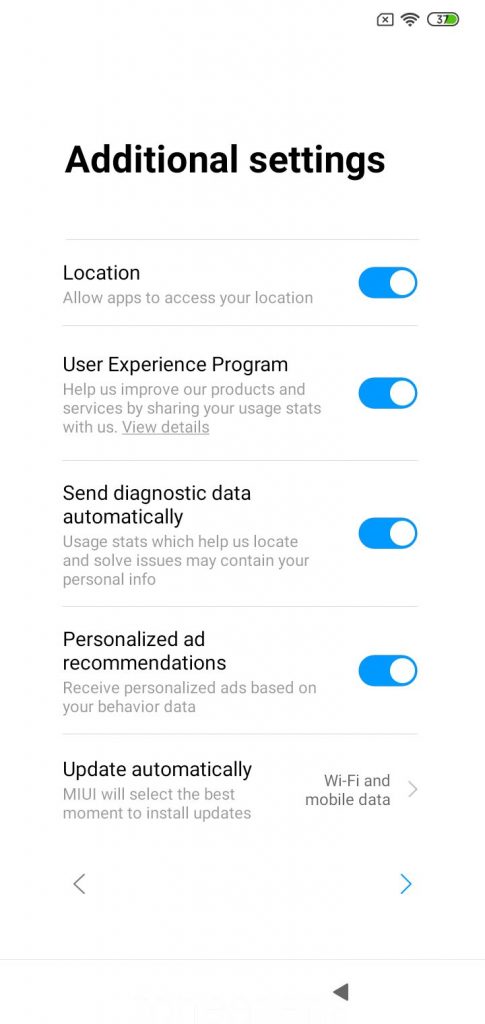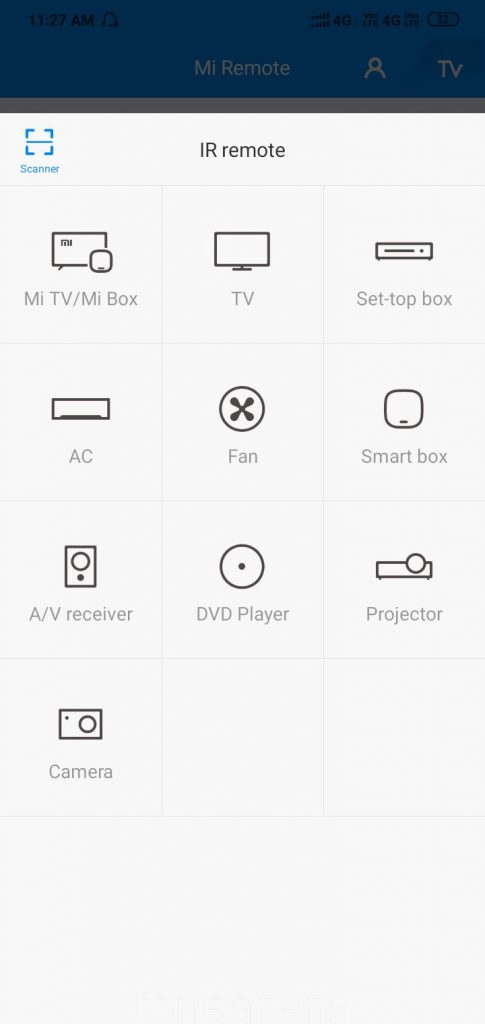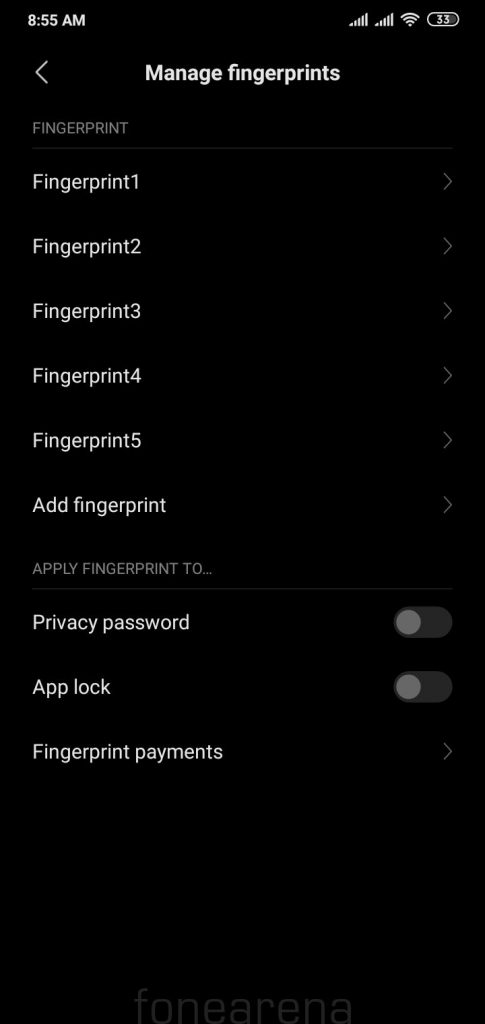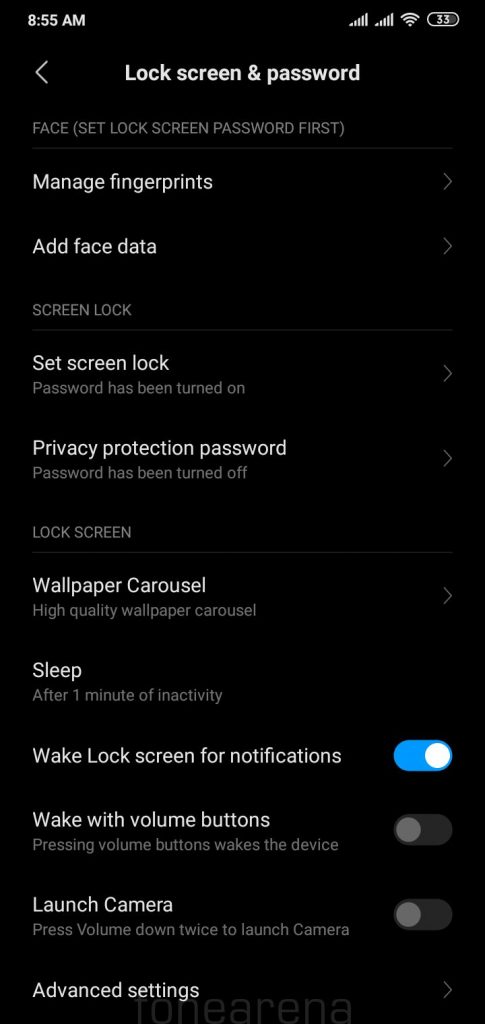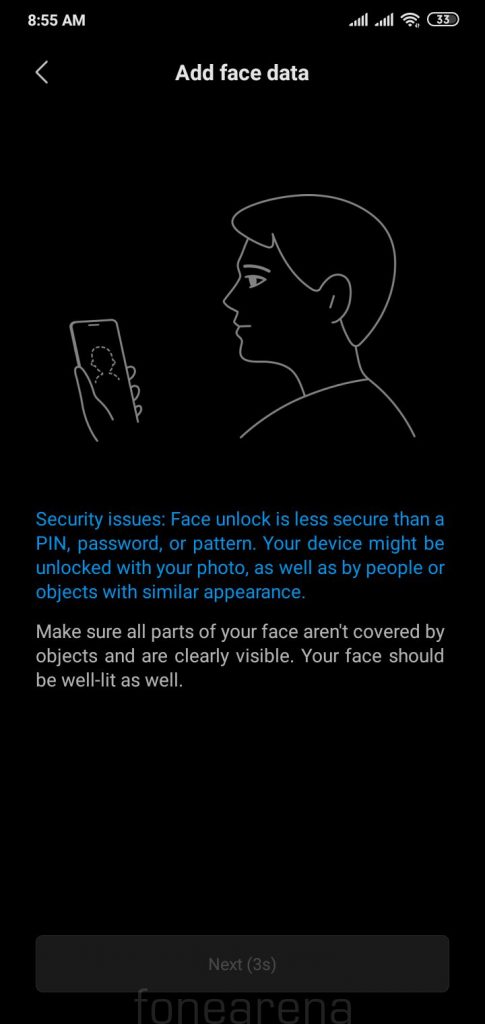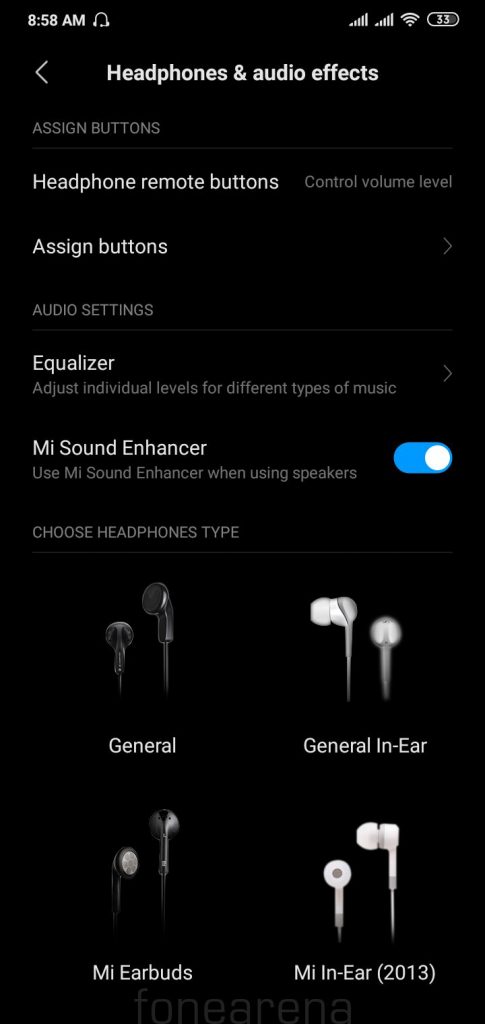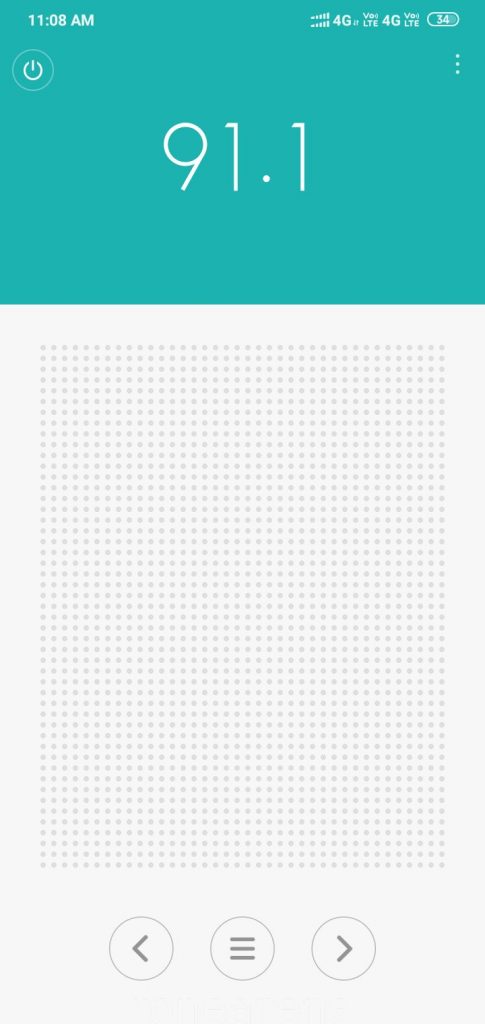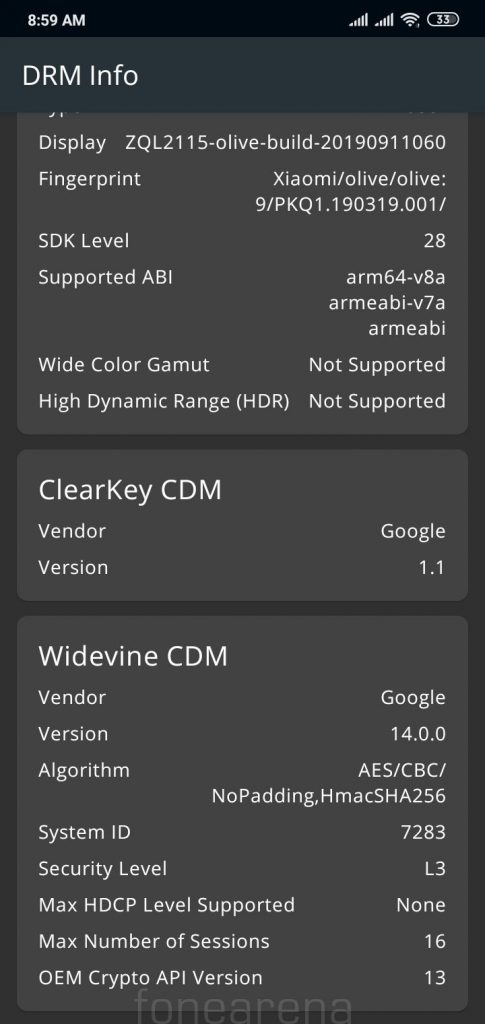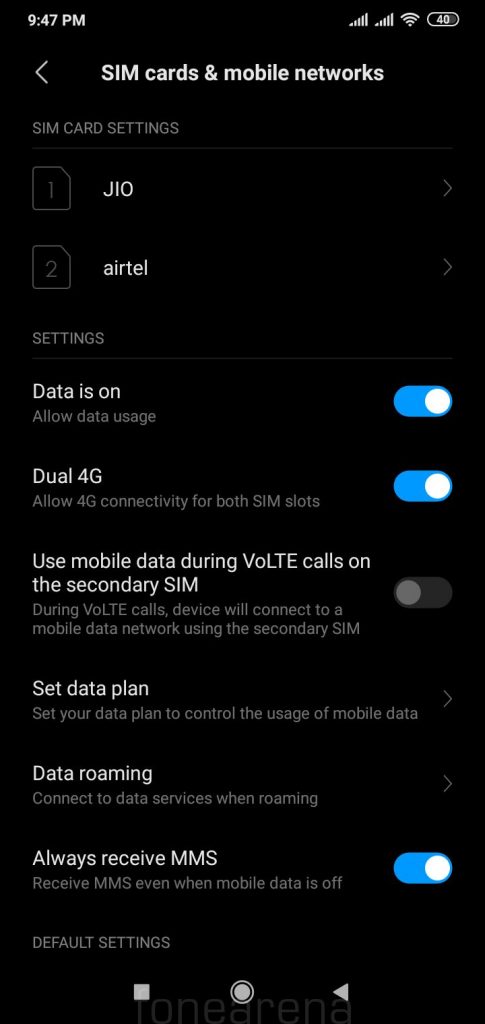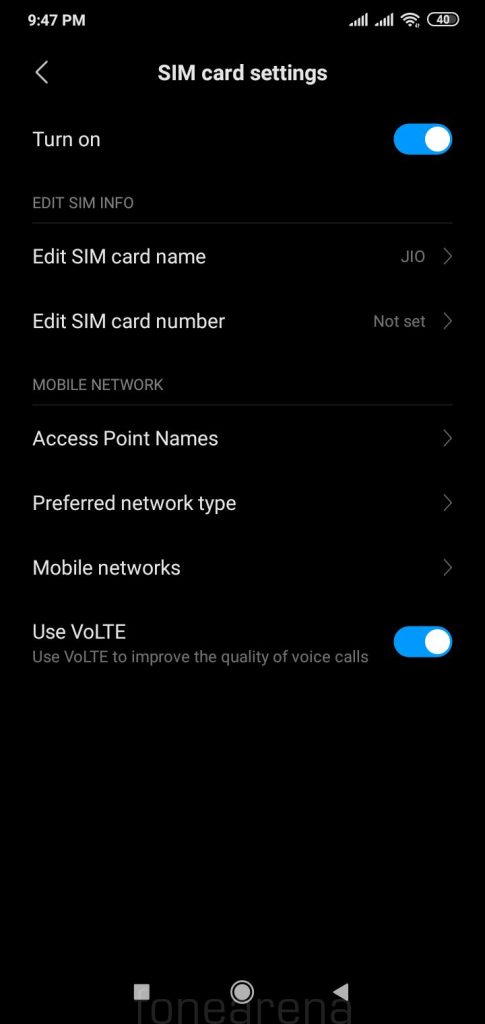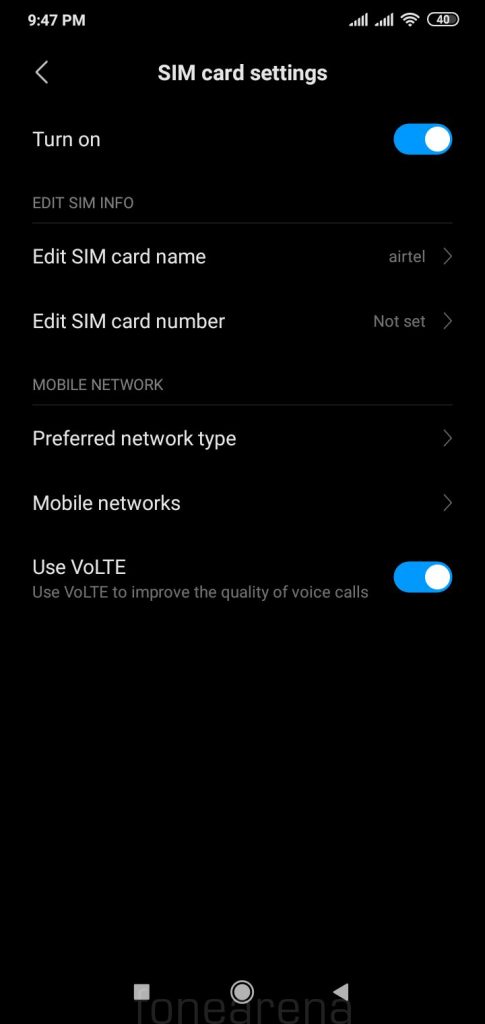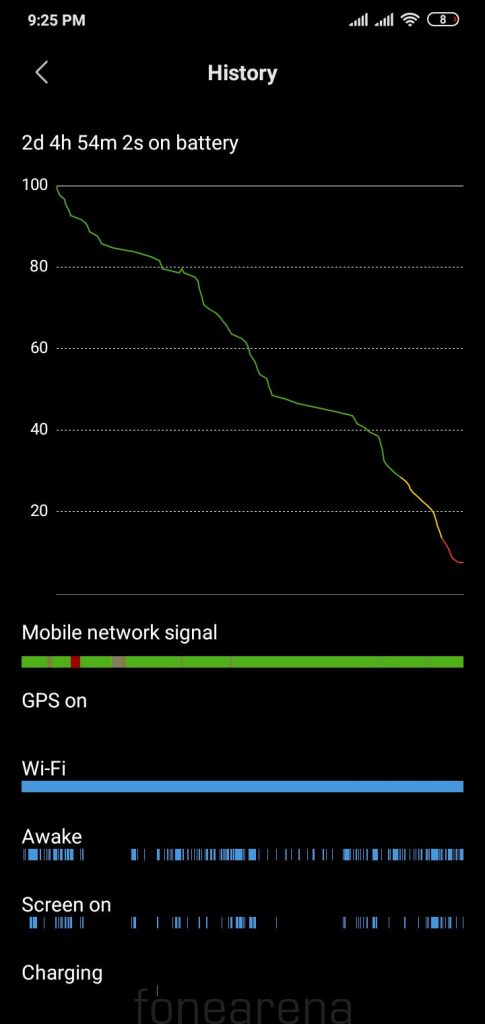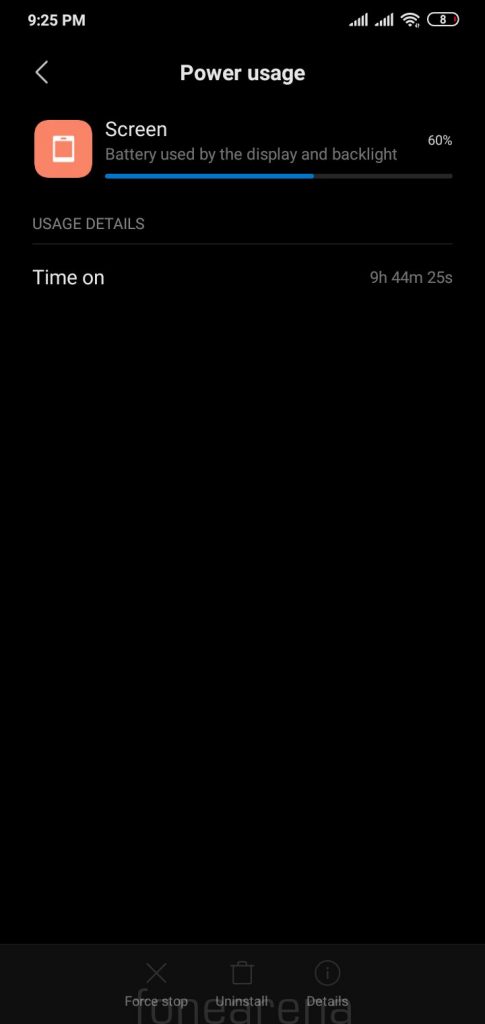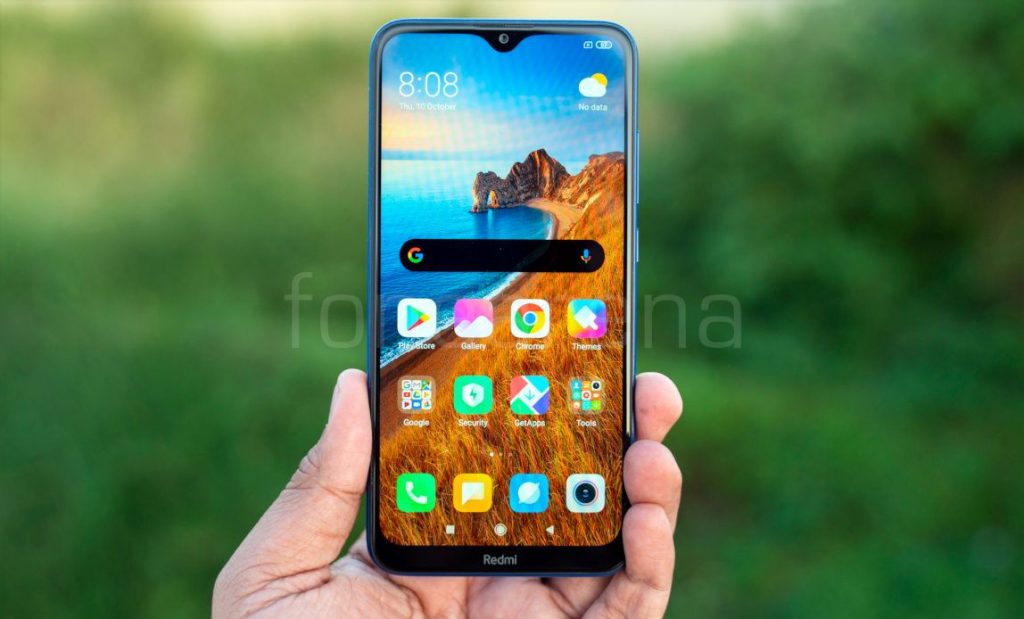
Xiaomi under the Redmi brand recently launched the Redmi 8, a better version of the Redmi 8A with upgraded specifications such as dual rear cameras, fingerprint sensor and Infrared sensor, while retaining the same 5000mAh battery with 18W fast charging, but this has the same Snapdragon 439 SoC. Is this worth the price? Let us dive into the review to find out.
Box Contents
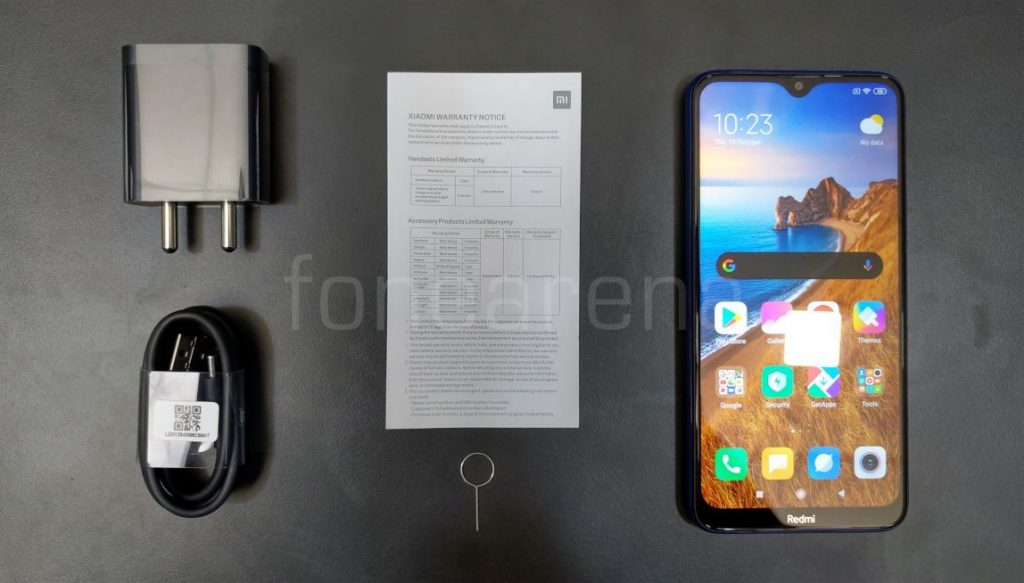
- Redmi 8 smartphone in Sapphire Blue color
- 2-pin 10W charger (5V-2A)
- USB Type-C cable
- SIM Ejector tool
- Clear protective case
- User manual and warranty information
Display, Hardware and Design
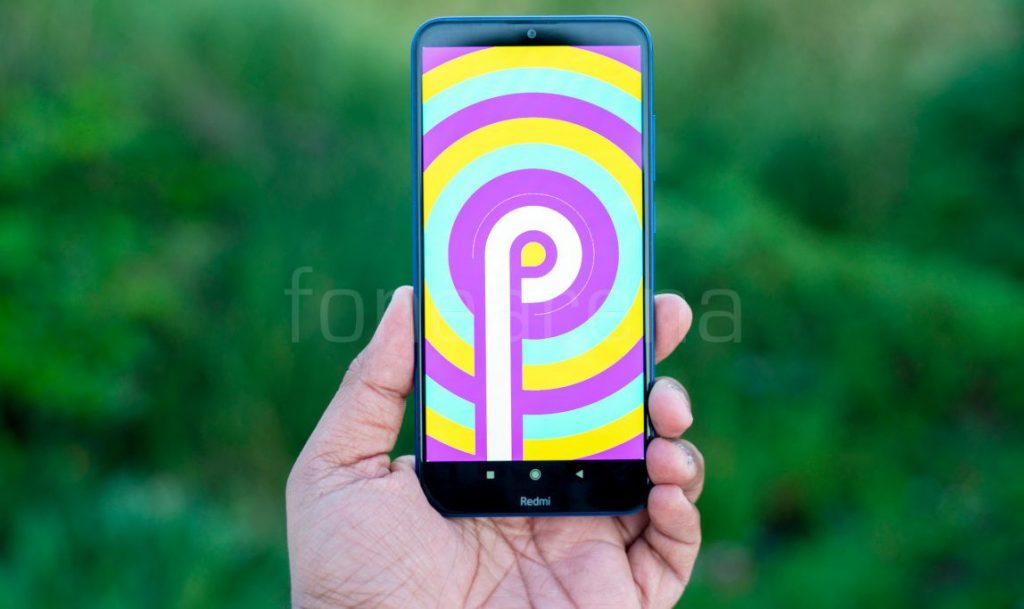
The Redmi 8 has the same 6.22-inch HD+‘Dot Notch’ display with a pixel resolution of 1520 × 720 pixels and a pixel density of about 270 PPI as the Redmi 8A. The display is bright, thanks to 400 nits brightness and 1500:1 contrast ratio and the colors are decent since it has 70.8% of NTSC color gamut. Sunlight legibility is good, since it has a Sunlight display to adjust the contrast of each pixel in real time, so images are less affected by glare. It also has Corning Gorilla Glass 5 protection that you rarely find in a smartphone in the price range.
Since this has a 19:9 aspect ratio screen, you can pinch to zoom to fill the screen when you use video apps, but the content is cropped. There is also an option to hide the notch that adds a black bar on the top. Under the display options there are different options to adjust colors and contrast based on your preference. There is also reading mode that lets you reduce the display’s blue light emission so it doesn’t cause eye strain when you are reading at night. There is Dark mode, similar to other MIUI phones.
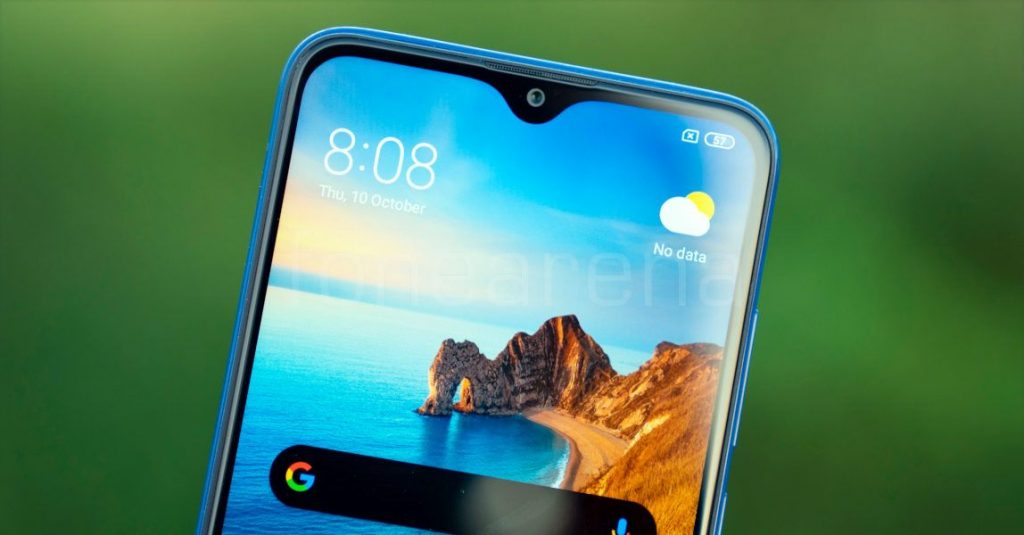
Above the display there is an earpiece on the top edge. The usual set of proximity and ambient light sensors are present on the bezel, but these are hardly visible. Even though this a budget phone, Xiaomi doesn’t miss out gyroscope and magnetic sensors in this phone. There is also an 8-megapixel camera on the front with f/2.0 aperture.

There is a small bezel below the display with Redmi branding. This is almost similar to the Redmi 7. The phone doesn’t have notification LED, which was present in the Redmi 7.
On the bottom there is a speaker grill. Next to it is the USB Type-C port, which you rarely see on phones in the price range. There is also the primary microphone and 3.5mm audio jack. On the top there is a secondary microphone and an infrared sensor. On the right there are usual set of power button and volume rockers. On the left there is are Dual SIM and microSD slots arranged in a single tray. The phone is 9.4mm thick, slightly thicker than 8.47mm Redmi 7, but it is 75.41mm wide and 156.48mm tall, making it slightly smaller, even though it has almost same display size.
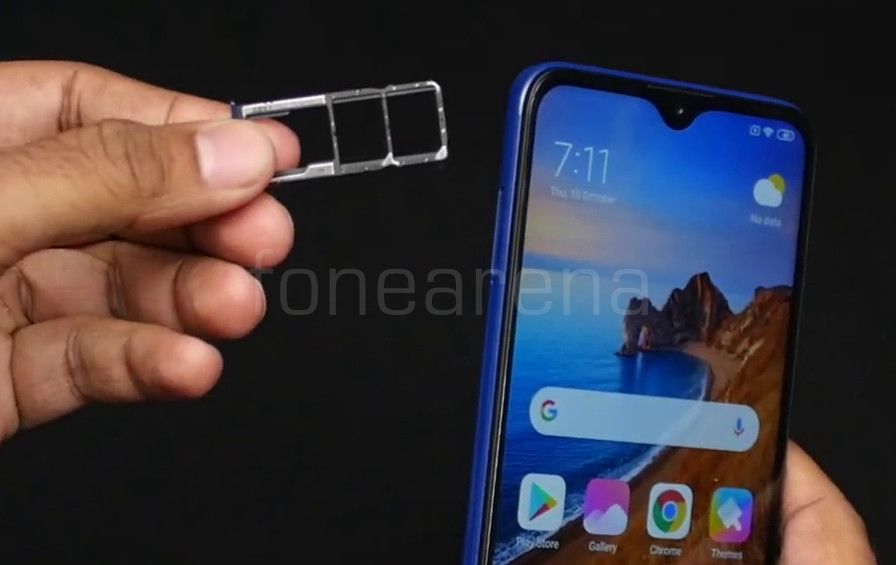
Similar to other budget Redmi series phones, it has a dedicated dual SIM and a micro SD slot that accepts cards up to 512GB.
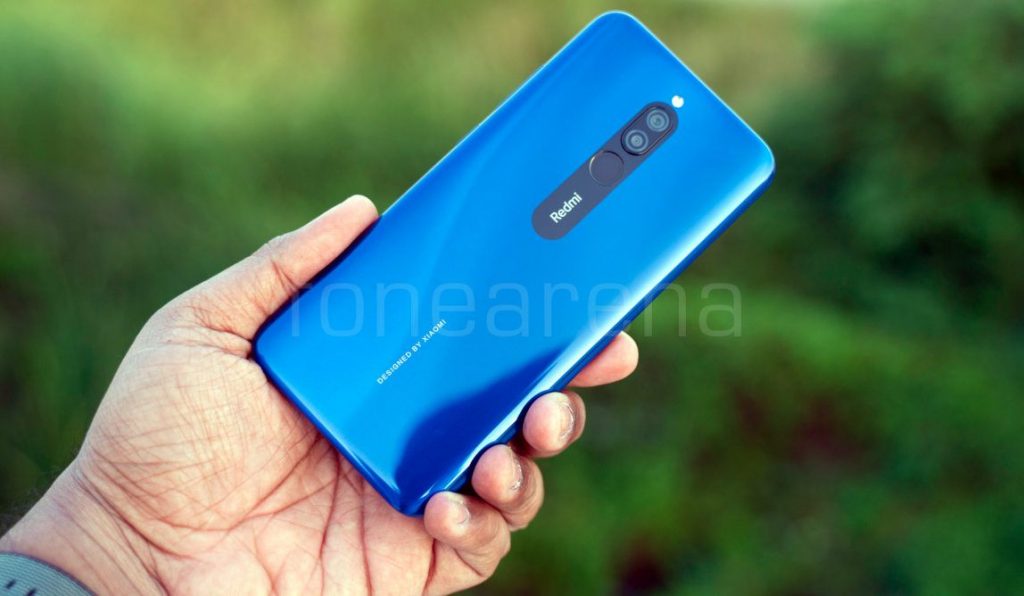
On the back there is a 12-megapixel camera along with a 2-megapixel secondary camera with LED flash. There is also a fingerprint sensor below it. This has slight camera bump, but it doesn’t show due to the design. Even though the phone has a large screen, it is compact to hold. It has about 81% screen-to-body ratio, better than 74% screen-to-body ratio in the predecessor. Unlike the predecessor, which had an Aura smoke offering a gradient design this has a new Aura Mirror Design that looks like a glass and reflects light at different angles. The plastic back is prone to fingerprints, but you can use the bundled case for protection.
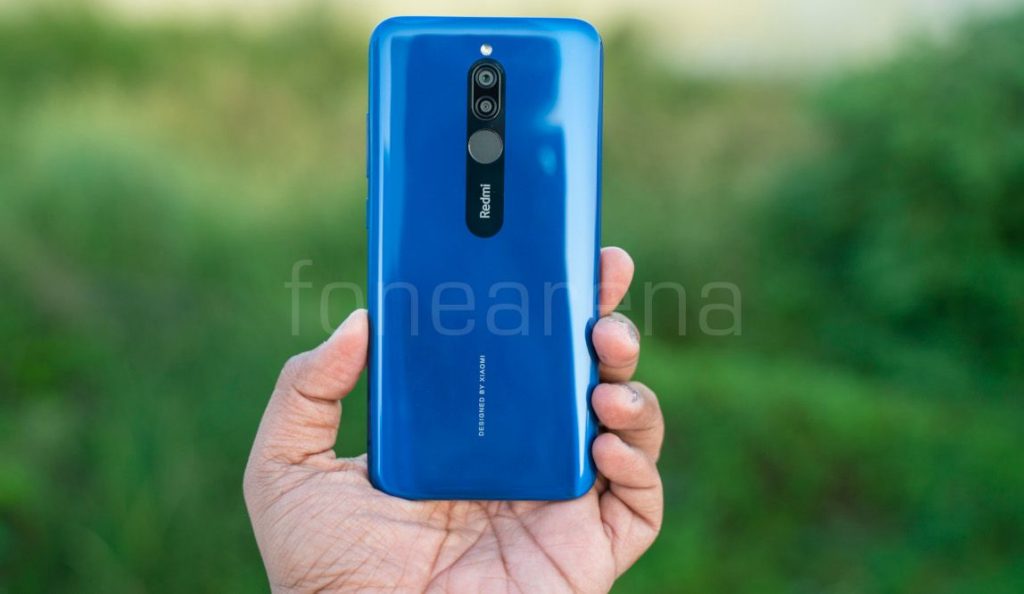
The phone even has a P2i nano coating similar to the latest Redmi phones, making it splash proof and it can also withstand light rain, but can’t be immersed in water since it lacks IP ratings. It packs a 5000mAh built-in battery, which is 25% more than the 4000mAh battery in the predecessor. It is a bit heavy at 188 grams since it has a large battery.
Camera
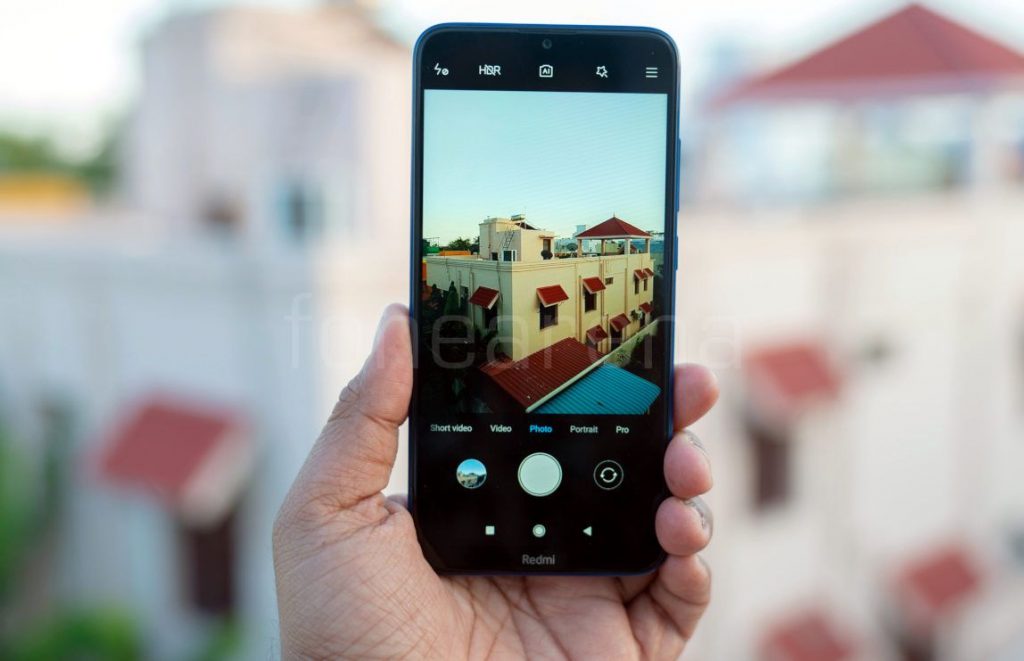
The phone packs a 12-megapixel primary rear camera with single LED Flash, 1/2.55″ Sony IMX363 sensor with 1.4μm pixel size, f/1.8 aperture, 6P lens and Dual PD auto focus, same has the Redmi 8A. There is also a secondary 2-megapixel camera with OmniVision OV02a10 It has an 8-megapixel front-facing camera with 1/4″ OmniVision OV8856 sensor, 1.12μm pixel size and f/2.0 aperture.
The camera UI is familiar with other Xiaomi smartphones running MIUI 10 that includes flash toggle, HDR, AI, color modes (Normal, Vivid, Film, Amour, Latte, Sun, Cookie, Calm, Soda, Gourmet, Glow, Berries, B&W and Fade) on the top. Pressing the menu option shows timer, frame adjustment and camera frame. There is a front camera toggle on the bottom along with option to select modes such as Short Video, Video, Photo, Portrait and Pro mode (to adjust white balance, focus, shutter speed (1/1000s to 32 seconds) and ISO (0 to 3200)). You also find palm shutter for the selfies. Since Xiaomi has enabled Cam2API by default on the phone, you can side-load ported Google Camera APK for advanced editing including RAW capture.
Coming to the image quality, daylight shots came well in bright conditions, for other conditions you can enable AI, and it gets better if you enable HDR since it improves the dynamic range. Thanks to Dual PD auto focus, it can focus an object quickly. Macro shots were good with good amount of details, and portrait shots were good with decent edge detection, thanks to the secondary sensor. For the price, this camera is good. Low-light shots are decent, but there is noise. There is no separate low-light mode, so you have to enable AI and leave the phone to detect it. Images with flash are good, and it is not overpowering.
Coming to the front camera, the 8-megapixel camera is decent. Portrait for front camera uses software-based blur, and the edge detection is decent. There is also AI beautify option that enhances the image, and it focuses only on the face. It doesn’t have a selfie flash, and comes with screen flash, which is fine.
Check out the camera samples (Click the image to view the full resolution sample.)
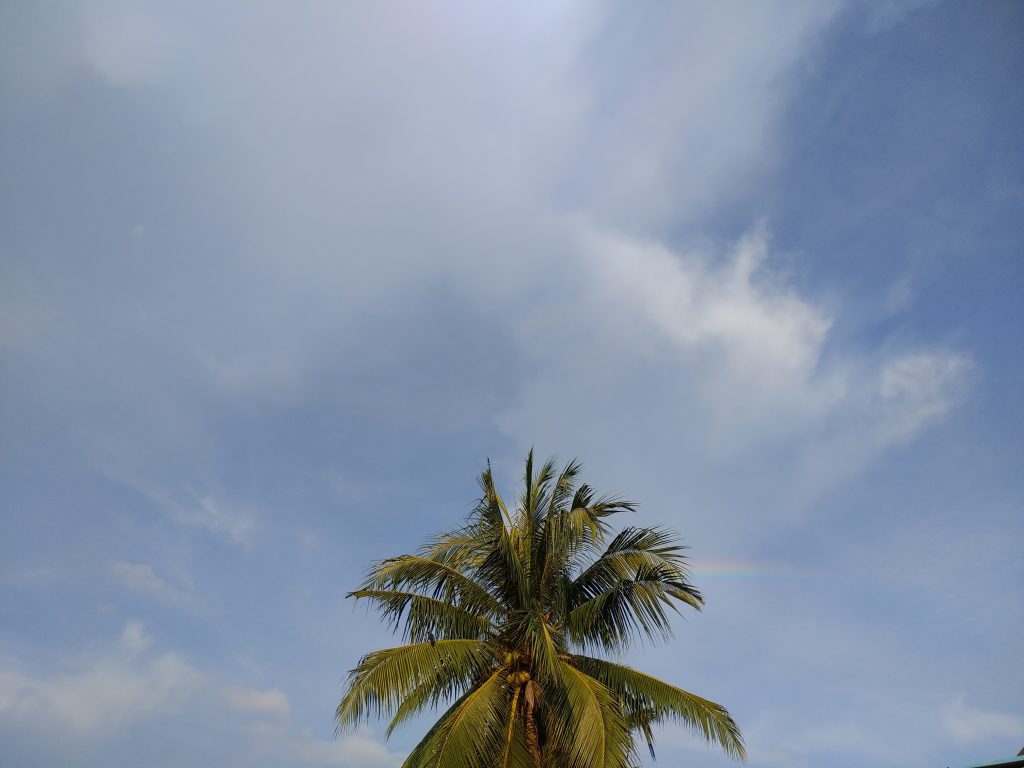
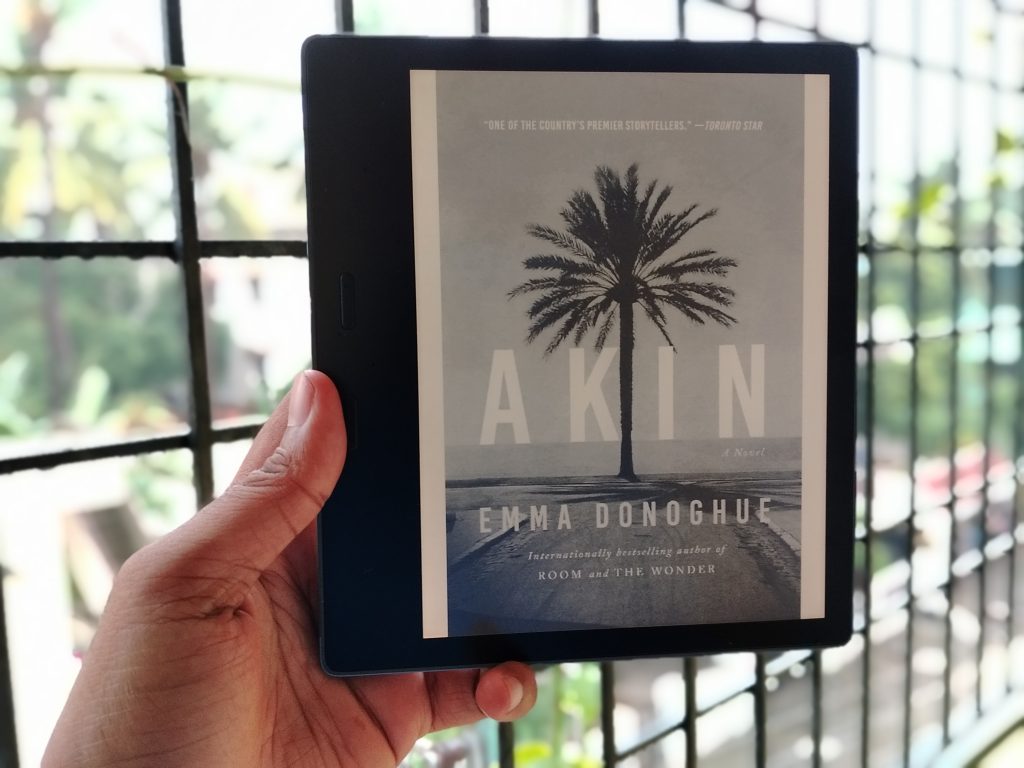
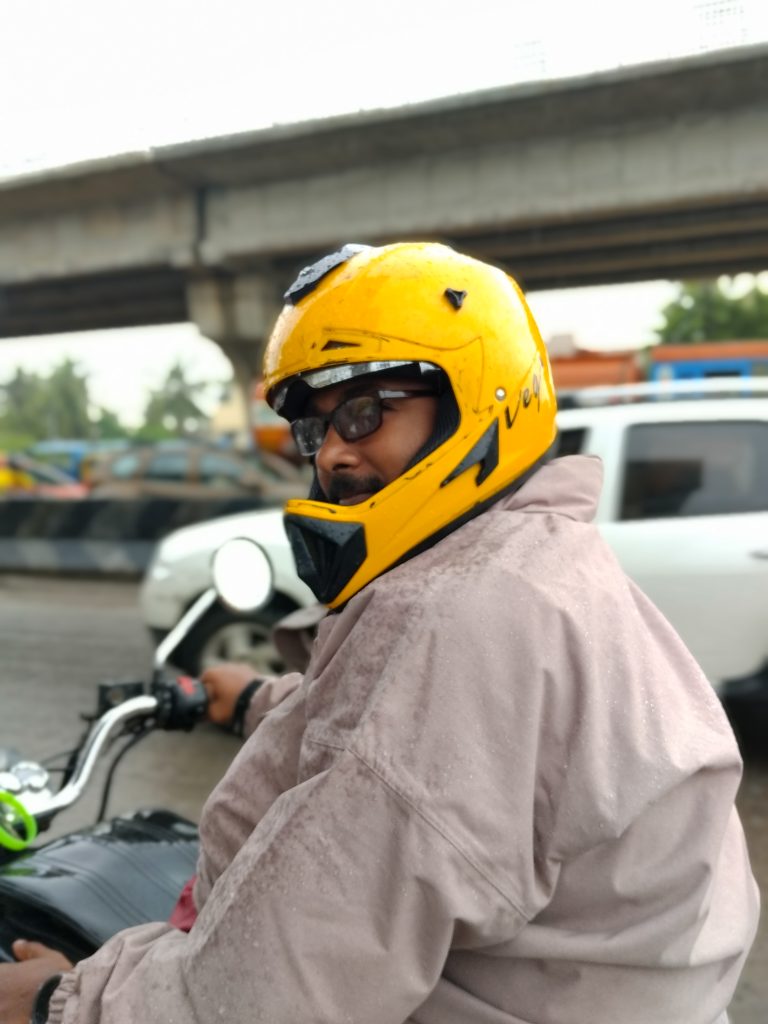
It can record videos at 1080p resolution at 30 fps. The front camera also has 1080p 30 fps video recording. There is time lapse, but no slow motion option. Check out the video sample below.
Software, UI and Apps
It runs Android 9.0 (Pie) out of the box with MIUI 10.3 on top with Android security update for August, 2019. MIUI 10 that was introduced last year brings several features including full-screen hand gestures and improved recent menu that takes advantage of the full-screen displays, improved single-finger swipe down gesture to expand notifications, redesigned volume sliders and more. The company has already confirmed that it will get MIUI 11 in next month. Xiaomi has been updating its App Vault with more cards and features. It has all the usual set of features such as Dual Apps, Second Space, App Lock, Quick Ball and more.
Apart from the usual set of utility apps, Google apps and Xiaomi’s own set of apps, it comes pre-loaded with Amazon Shopping, Facebook, Dailyhunt, Gaana, Opera News, Opera Mini, Vmate and more apps. It also asks for additional app installation during setup, so just skip this. You can easily uninstall these apps, but these come up when you reset the phone.
Out of 4GB RAM, you get 3.5GB of usable RAM, and about 2GB of RAM is free when default apps are running in the background. Out of 64GB internal storage, you get about 50.4GB of free storage. Since this has eMMC 5.1 storage, we got sequential read speeds of about 284MB/s. The built-in Cleaner inside the storage lets free up space by clearing cache and obsolete files.
Xiaomi is infamous for showing ads on its phones with MIUI, which the company says is done in order to support the development cost of its own apps. If you don’t want to see ads, you have to disable recommendations while setting the phone up, promoted apps and in Xiaomi’s own apps such as Music, Mi Video, File Manager, Mi Drop, App Vault, Cleaner, and others. You can also uninstall these apps by following the procedure here without rooting the phone.
Since the phone has an infrared sensor for remote function, it comes with Mi Remote that lets you control your home appliances easily. It worked flawlessly with Samsung TV, Airtel Set-top box, Ogenral AC and other appliances. It also supports A/V receiver, DVD Player, Projector, Camera and more.
Fingerprint sensor and Face unlock
The phone has a fingerprint sensor on the back. It immediately unlocks phone just by keeping your finger on the home button so that you don’t have to press it. You can add up to 5 fingerprints. You can also use the fingerprint for app local and payments in apps. The phone also has face unlock, but it is not as secure as fingerprint since it can be unlocked with a photo. It also doesn’t work if you use sunglasses or hats.
Music Player, FM Radio and Multimedia
The Mi Music Player is the default music player with usual Xiaomi audio effects and equalizer. It also has wireless FM Radio with recording. Audio through the speaker is loud, thanks to new 0.82CC acoustic chamber, but it does gets distorted on full volume. Since the speaker is present on the bottom, audio doesn’t get muffled when the phone is on a flat surface. Audio through earphones is good. This doesn’t have Widevine L1 support and only has L3 support, but some cheaper Samsung A series phones have it.
Dual SIM and Connectivity
It supports 4G VoLTE for Reliance Jio and Airtel as well as support Dual 4G VoLTE that offers 4G in both the SIM cards at a time. There is X6 LTE modem. Other connectivity options include Wi-Fi 802.11 b/g/n (2.4GHz), Bluetooth 4.2 LE and GPS. It also has USB OTG support that lets you connect USB drives. The dialer and messaging UI are similar to other Xiaomi smartphones running MIUI 10. Since this is a dual SIM phone, you get the option to select either SIMs when calling or sending a text message. Moving on, the call quality is good, and we did not face any call drops and the earpiece volume was loud.
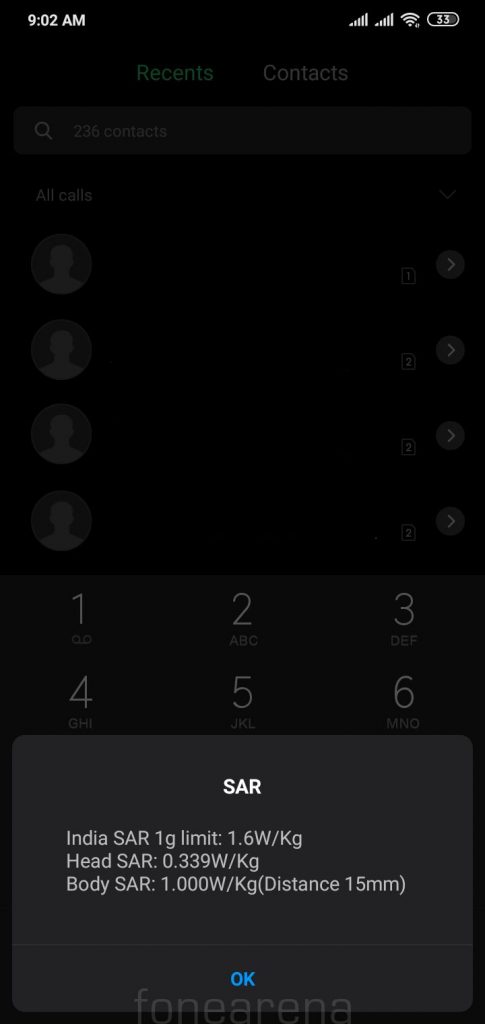
We don’t really mention SAR values for phones in our reviews since most are below 1W/kg, even though the limit in India is 1.6 W/kg (over 1 g). Even though the Redmi 8’s head SAR is 0.339W/Kg, body SAR is at 1.00W/Kg (Distance:15mm) which is slightly more compared to other phones Xiaomi sells in India currently. We would recommend not to keep the phone in the pocket for long.
Performance and Benchmarks
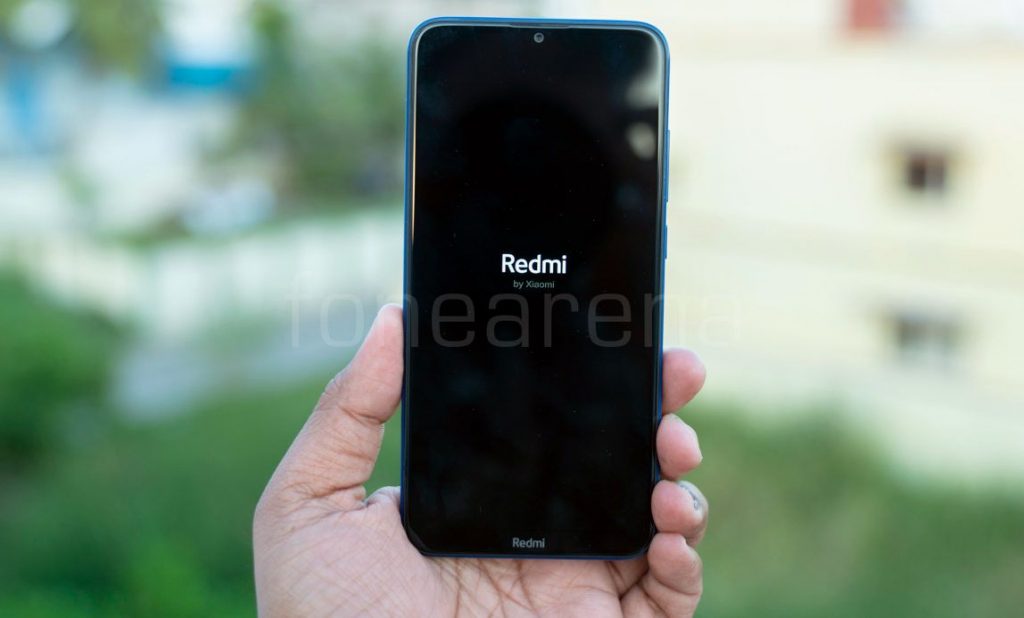
The Redmi 8 is powered by Qualcomm Snapdragon 439 12nm Octa-Core (Quad 1.95GHz Cortex A53 + Quad 1.45GHz Cortex A53) Mobile Platform with Adreno 505 GPU, same as the Redmi 7A and 8A. This is a downgrade compared to Snapdragon 632 in the Redmi 7. Talking about the real world experience, the performance is smooth, but the gaming performance is just fine and not exceptional since this has an Adreno 505 GPU. It did get a bit hot when I was using the phone on 4G outdoors in the sun, but it doesn’t get too hot to handle. 4GB RAM is more than enough for good multi-tasking experience, and it doesn’t slow down like the 2GB RAM Redmi 8A that I reviewed recently. Check out the synthetic benchmark scores below.
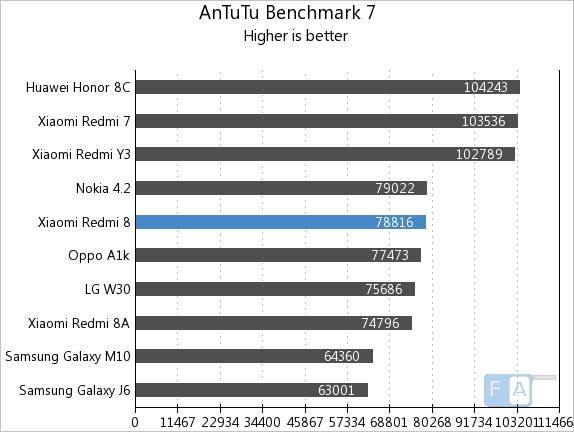
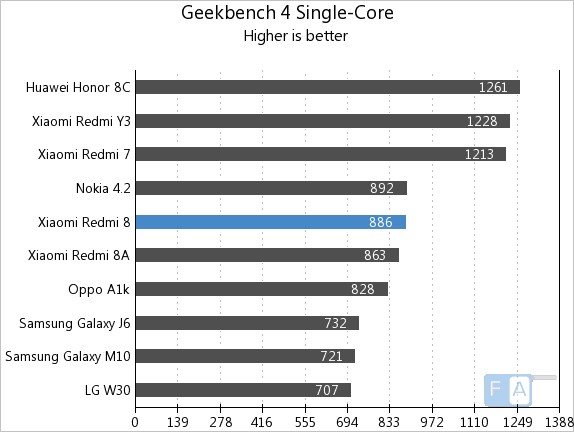

Battery life
The 5000mAh (typical) battery offers brilliant battery life that lasts the more than a day even with heavy use. With average use it lasted for two days. I got close to 10 hours of screen-on-time for two days on a single charge.
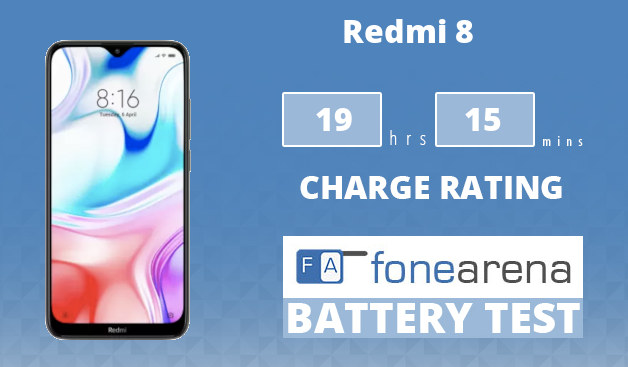
In our One Charge rating, the Redmi 8A scored hours minutes, which is good for a phone with a 5000mAh battery. It also has support for fast charging, and takes slightly over 2 hours to charge the phone from 0 to 100% with 18W charger, and 0 to 50% took about an hour. With the bundled 10W charger it takes about 3 hours to charge from 0 to 100%, and 0 to 50% takes slightly over an hour.
Conclusion
Priced at Rs. 7999, the Redmi 8 has the same display, 5000mAh battery with support for 18W USB Type-C fast charging and splash-resistant body as the Redmi 8A, and also adds an infrared sensor, rear-mounted fingerprint sensor and dual camera set up for an extra Rs. 1500, but you also get 4GB RAM and 64GB storage. However, the company could have gone with the same Snapdragon 632 SoC for a faster performance and a better gaming experience since the Snapdragon 439 is downgrade.
Competition
There is Infinix Hot 8 that is Rs. 1000 cheaper, offering almost similar features, but you have to manage the micro USB port and 10W charging. If you can spend a bit more, the Redmi Note 8 priced at Rs. 9999 will go on sale next week offers Full HD+ display, quad-camera setup and a faster Snapdraon 665 SoC.
Availability
Priced at Rs. 7999 for the 4GB RAM with 64GB storage version (For first 5 million units and Rs. 8999 after that), the Redmi 8 is available from Flipkart, mi.com and Mi Home Stores, and will soon be available across all other offline stores.
Pros
- Good camera
- Brilliant battery life
- USB Type-C with 18W fast charging, 10W charger in the box
- Splash-resistant (P2i coating) body
Cons
- Snapdragon 632 to 439 is a downgrade
- No notification LED
- Bloatware and ads in UI
Photography by Siraj

